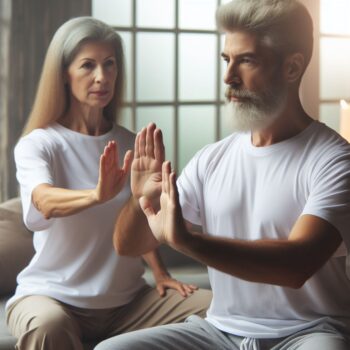Tai Chi Therapeutics
The Therapeutic Benefits of Tai Chi and Qigong

Tai Chi and Qigong, ancient mind-body practices rooted in Chinese tradition, have transcended time and geography to become powerful tools for enhancing physical, mental, and emotional well-being. These practices, often referred to as “meditation in motion,” have a rich history that intertwines with philosophy, martial arts, and holistic healing. Today, they find their place in therapeutic settings, offering a harmonious blend of movement, mindfulness, and energy cultivation.
Historical Roots
Tai Chi, also known as Tai Chi Chuan, originated in China during the 13th century. It was developed by Taoist monks who sought to integrate martial arts principles with the philosophy of yin and yang—the balance of opposing forces. The graceful, flowing movements of Tai Chi mimic the natural world, drawing inspiration from animals, elements, and cosmic energies. Over time, Tai Chi evolved into a holistic practice that encompasses physical exercise, meditation, and self-cultivation.
Qigong, on the other hand, has even deeper roots, dating back thousands of years. Its name translates to “energy work” or “breath work.” Ancient Chinese sages believed that Qi (pronounced “chee”), the life force or vital energy, flows through the body’s meridians. Qigong aims to unblock and enhance this energy flow, promoting health and longevity. It encompasses various forms, including static postures, dynamic movements, breath control, and visualization.
Application in Therapeutic Settings
In today’s fast-paced world, stress, chronic illnesses, and mental health challenges abound. Tai Chi and Qigong offer a gentle refuge—a way to reconnect with our bodies, minds, and the universe. These practices have found their way into therapeutic contexts, complementing conventional medicine and promoting holistic healing. Here’s how:
Stress Reduction: Both Tai Chi and Qigong emphasize slow, deliberate movements synchronized with deep breathing. This mindful approach calms the nervous system, reduces cortisol levels, and alleviates stress. As an adjunct therapy, they enhance mental resilience and emotional well-being.
Balance and Stability: Research shows that practicing Tai Chi improves balance and stability, especially in older adults and individuals with conditions like Parkinson’s disease. The deliberate weight shifts and controlled movements enhance proprioception and prevent falls.
Pain Management: For those dealing with chronic pain, Tai Chi and Qigong provide relief. Whether it’s knee osteoarthritis, fibromyalgia, or chronic neck pain, these practices improve joint flexibility, reduce discomfort, and promote overall comfort.
Heart Health: Tai Chi benefits individuals with heart failure by enhancing cardiovascular function, reducing blood pressure, and improving peak oxygen consumption. It’s a gentle yet effective way to support heart health.
Cancer Support: Cancer patients often face physical and emotional challenges. Qigong and Tai Chi help manage symptoms such as fatigue, anxiety, and pain. They also boost immune function and enhance overall quality of life.

The Value of One-on-One Sessions
While group classes are popular, personalized instruction from a qualified teacher holds immense value:
Tailored Guidance: A skilled teacher can adapt Tai Chi and Qigong exercises to an individual’s unique needs, addressing specific health concerns or limitations.
Correct Form: Proper alignment and movement patterns are crucial. One-on-one sessions allow for precise corrections, ensuring maximum benefit and minimizing the risk of injury.
Mindful Connection: Personalized attention fosters a deeper mind-body connection. Students can explore the subtleties of energy flow and meditation under expert guidance.
Tai Chi and Qigong offer a holistic path to well-being—one that transcends physical fitness and touches the soul. As we embrace their ancient wisdom, let us honor the balance of yin and yang within ourselves, finding healing and harmony through these timeless practices.
References:
- Liu, X., Li, R., Cui, J., Liu, F., Smith, L., Chen, X., & Zhang, D. (2021). The Effects of Tai Chi and Qigong Exercise on Psychological Status in Adolescents: A Systematic Review and Meta-Analysis. Frontiers in Psychology, 121
- National Institutes of Health. (2015). Tai Chi and Qi Gong2
- NewYork-Presbyterian. (n.d.). How Qigong and Tai Chi Benefit the Body and Mind3